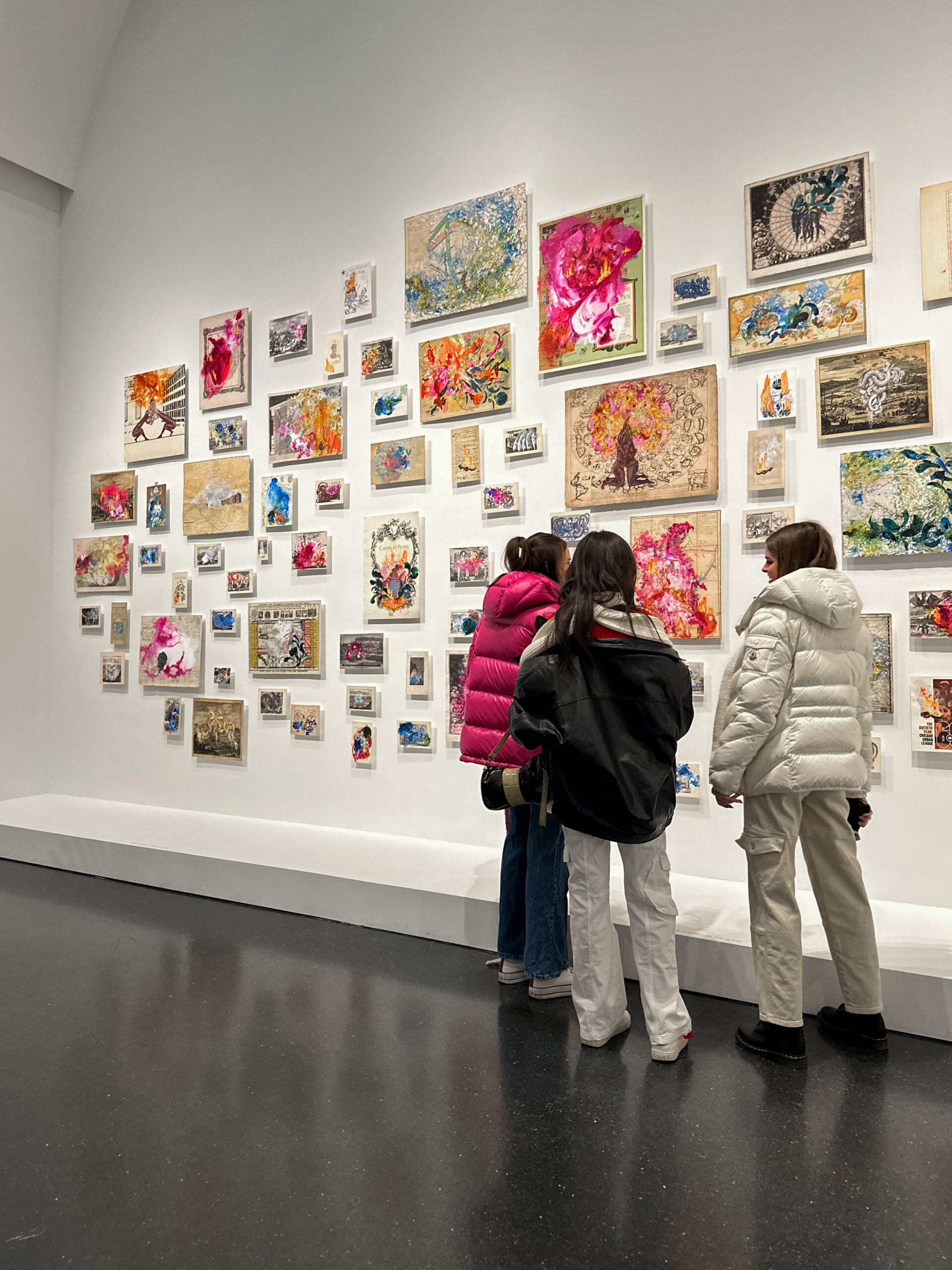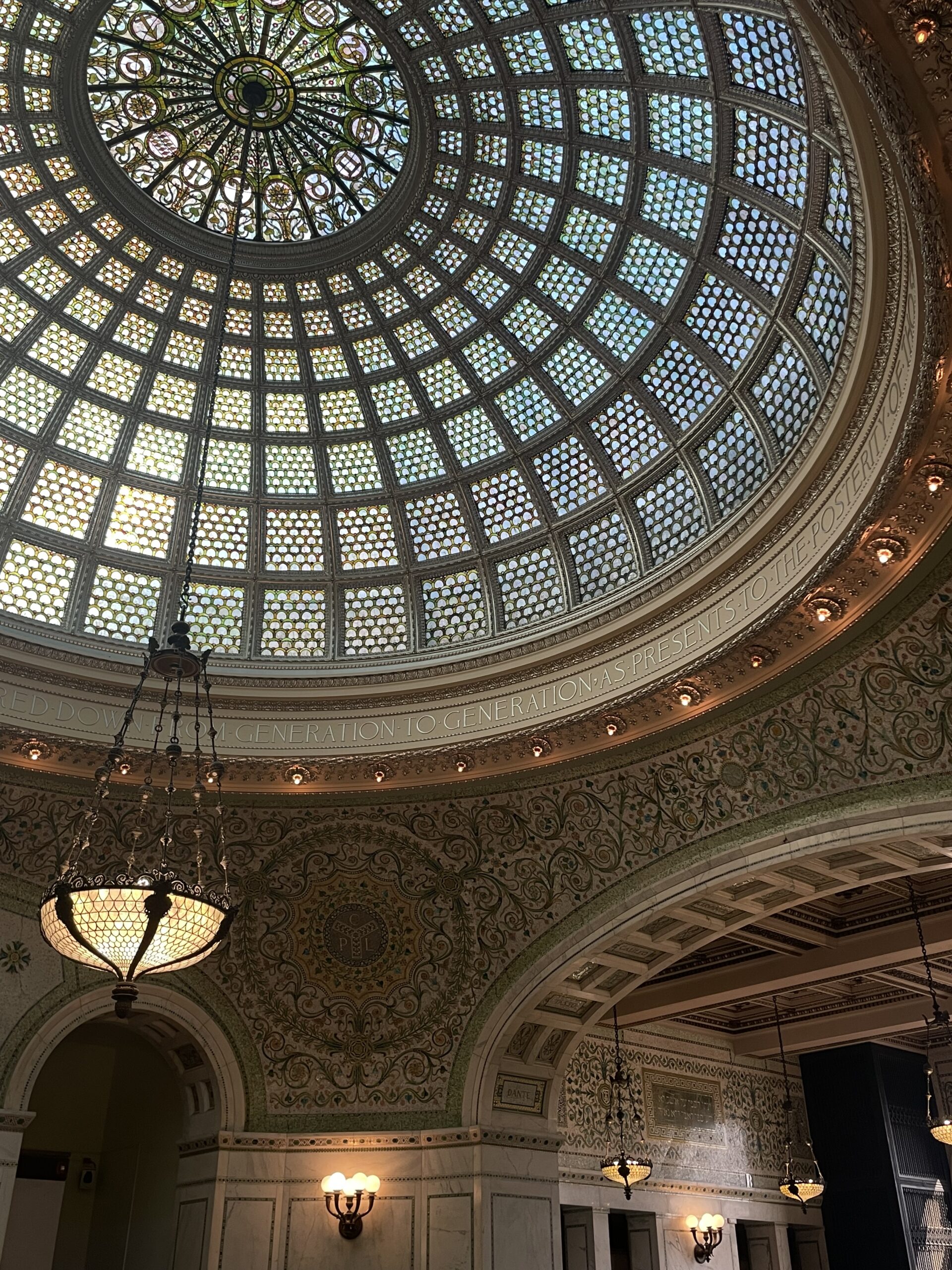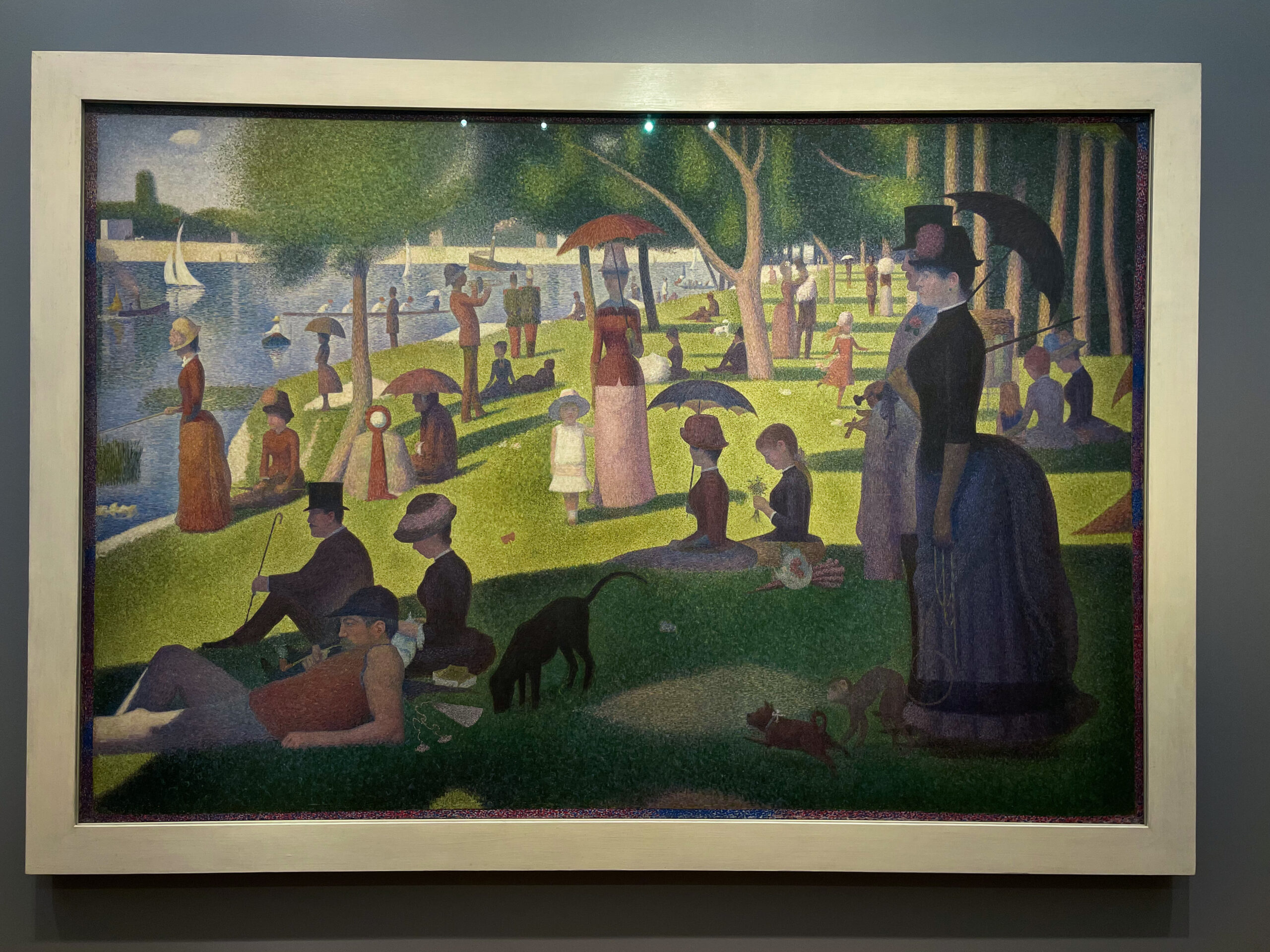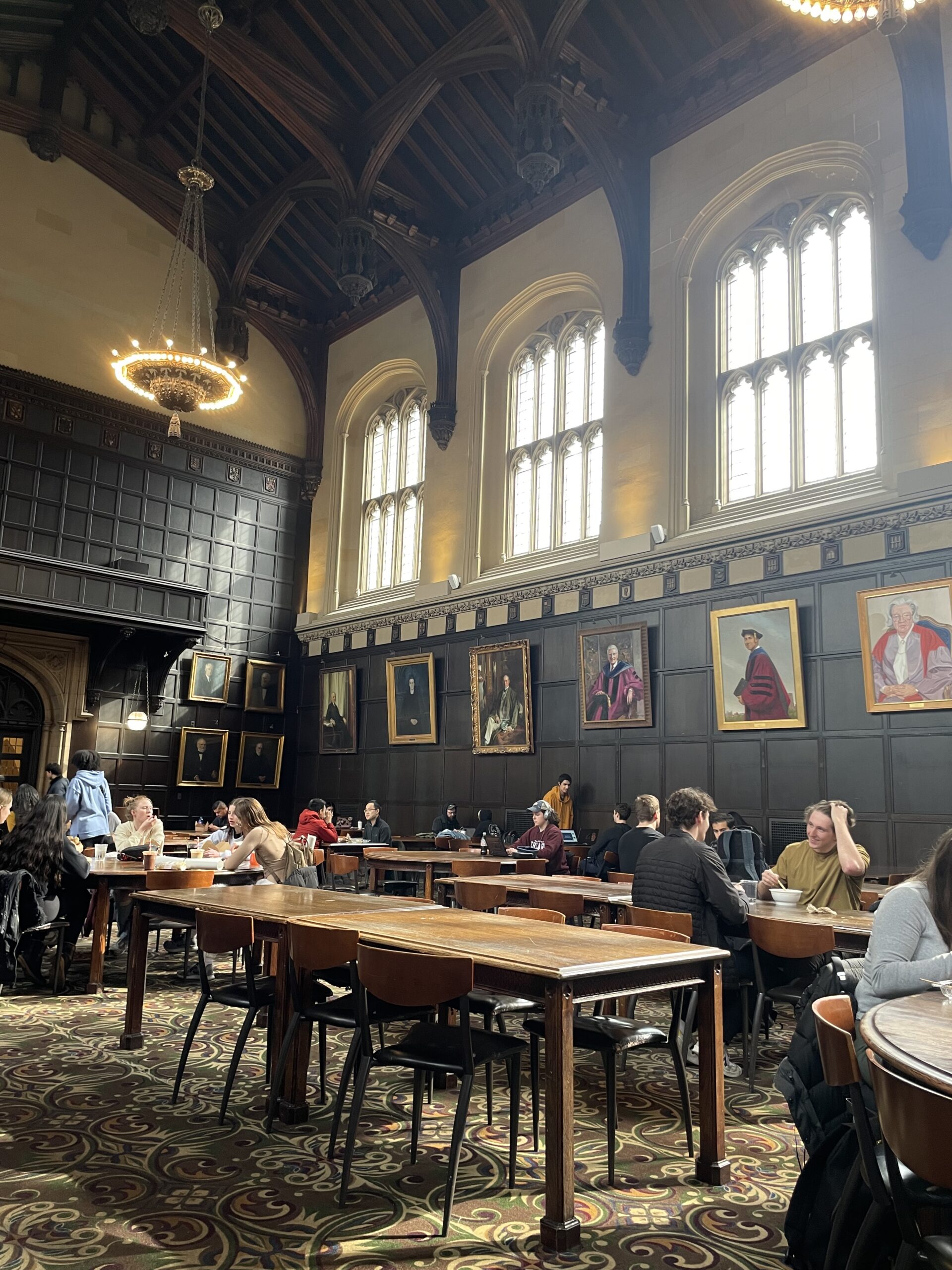Looking at Art in MoCA with Quinn B. and Mara D. (Courtesy/Jasmine E.)
Columbus Academy hosts a Chicago Art trip every four years, giving upper school studio art, photography, and ceramics students the opportunity to explore the Windy City’s cultural arts. This year, I was one of fifty students who participated in three jam-packed days during which we traversed Chicago’s art museums, historical art sites, and art galleries.
This trip will be one of my favorite high school memories. I encourage future art students to consider going to the 2026 event. If you are curious about the experience, here’s my rundown:
On Saturday, March 4 at 5:30 a.m., we departed from school to begin the seven-hour drive to the city. Upon arrival, we explored the renowned museums on the University of Chicago’s campus: The Smart Museum of Art and the Oriental Institute.
We first visited the Smart Museum, where two exhibits were on display:
The exhibits Not All Realisms and The Metropol Drama were on display at the Smart Museum. Taken from the museum’s website, Not All Realisms “addresses photography in the context of Africa’s long 1960’s—amid resistance, revolution, new nationalist and transnational movements, and the stuff of daily life therein” while The Metropol Drama “proposes another way of looking at our aesthetic, economic, and emotional history—an amalgam we call ‘cosmopolitanism.’” Though small in size, the Smart Museum’s pieces were vast in quantity and rich in meaning.
After lunch in the university’s dining hall, we visited the Oriental Institute, the school’s interdisciplinary research center for ancient Near Eastern studies and archaeology museum. Featured were eight exhibits with artifacts from Mesopotamia to ancient Turkey. My favorite display was the Egyptian gallery, featuring a colossal statue of King Tutankhamun that dated to 1334 BC as well as the mummy and coffin of Meresamun from sometime between 946-715 BC.
Hungry for food after a busy afternoon, we went to Lou Malnati’s for Chicago’s famous deep dish pizza. After pizza, salad, pasta, and dessert, we attended artist workshops featuring different niche art forms. In my group, we learned how to screen-print onto clothing.
The following morning, I woke up excited for the trip’s main events: visiting Millennium Park and the Art Institute of Chicago. We started with about a half-mile walk from our hotel to the Congress Plaza and Millennium Park. I took pictures in front of the Cloud Gate, better known as “The Bean,” and walked around the park.
Next, we visited the Chicago Cultural Center and the Museum of Contemporary Art (MoCA), all before noon. On the second floor of MoCA, an exhibit titled Chicago Works by Gregory Bae caught my eye. Bae’s exhibition depicts everyday objects looping, stuttering, or failing, such as a tire spinning in place on a treadmill. As noted on MoCA’s website, “time, distance, and desire are inextricably linked within [Bae’s] work, in which twin impulses—to expand time and to overcome distance—are informed by feelings of longing.” This exhibition made me search for meaning beyond the surface of each work.
At 1:30 p.m., we arrived at the Art Institute of Chicago, my favorite part of the weekend. We had over three hours to explore the museum, but I could have spent all day looking at the Institute’s near-300,000 works of art. Some highlights included forty-seven Claude Monet paintings and drawings, Jackson Pollack’s Greyed Rainbow and Georges Seurat’s best-known painting for its excellence in pointillism, A Sunday on La Grande Jatte.
We stopped by The Fireplace Inn for dinner before walking to The Second City, a comedy theater, for an improv titled Do The Right Thing, No Worries If Not. I had low expectations going into the show, but it was one of the most jaw-dropping experiences I have ever had. The performers brought a new meaning to the word creativity, and I left the theater gasping for air from laughing so hard.
On our last day, we visited the Agora Statues in Grant Park and then went to the Museum of Contemporary Photography (MoCP), which was challenging because recognizing the deeper meanings behind artistic photographs was something I had not studied.
To top off our adventure, we toured the Robie House, often cited as the best example of the prairie style of architecture. Built in the early 1900s, Frank Lloyd Wright’s blending of interior and exterior spaces through a soft filtration of light inspired many architects across the world.
This trip increased my love for creativity and artistry, and I will remember it for years to come.











